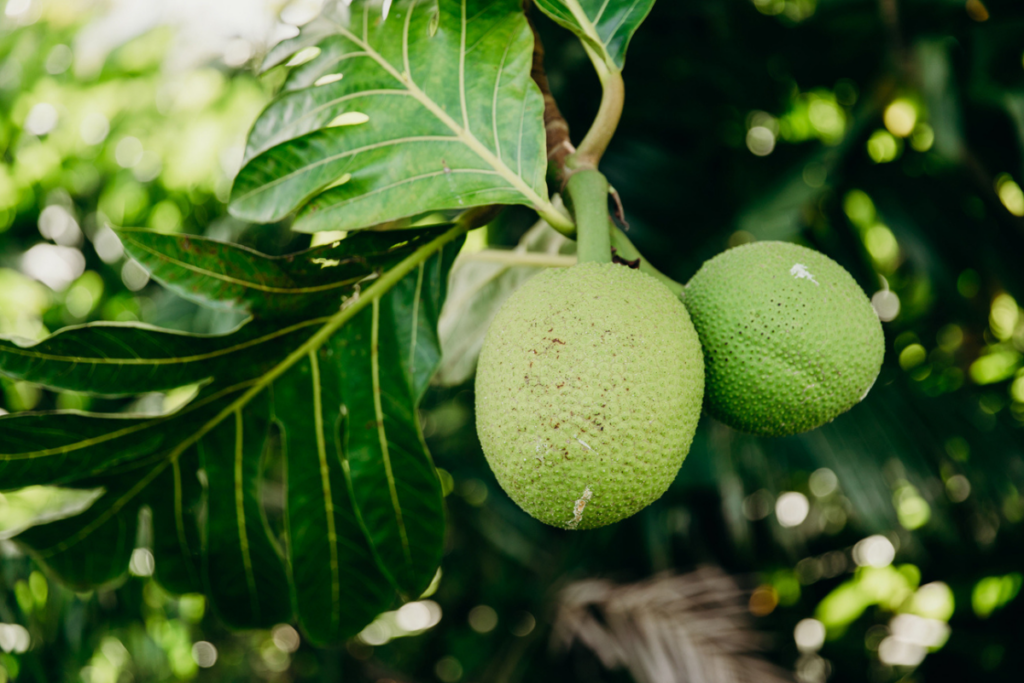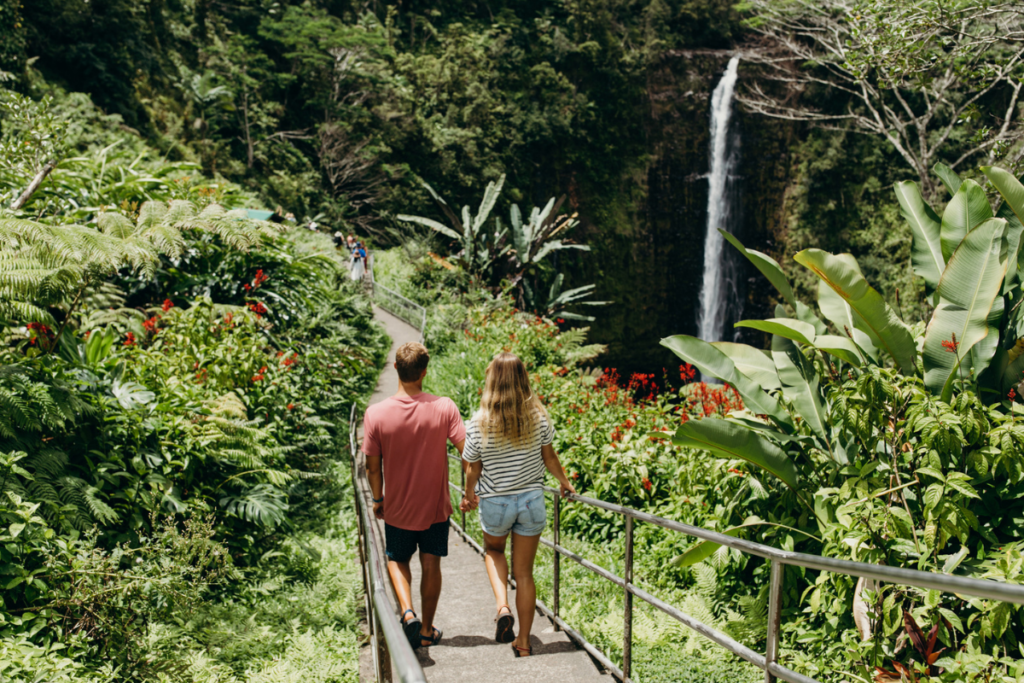The Legend of ʻUlu in Hawaiʻi
More local restaurants are serving the fruit that’s been nourishing Hawaiians for centuries.

Before sunrise one morning, on Hawai‘i Island, a man named ‘Ulu prayed to the gods for help and guidance. His son was dying and his village was starving. Later that day, ‘Ulu told his wife he would not live to see morning. “Bury my body outside near the stream,” he said. “In the morning go check to see if my prayer has been answered.”
The next morning, when the wife checked the spot where she’d buried her husband, she found a fruit tree, which she named ‘Ulu. And soon, that tree was providing so much fruit she was not only able to save her son, but end famine in her village as well.
This story of ‘ulu, or breadfruit, speaks to the fruit’s resilience.
But it’s just one of many Hawaiian legends depicting the origin of ‘ulu. The perennial crop was brought to the Islands by early Polynesian voyagers, centuries before Western contact. They used every part of the tree: the wood for building houses and making clothes, the fruit and leaves for food and medicine. ‘Ulu trees can live more than 100 years, producing 250 to 1,000 pounds of nutrient-dense fruit annually depending on their size. The fruit is round and solid with a coarse, lime-colored exterior and can be as small as a fist or as large as a bowling ball. When firm it can be cooked like a potato; when soft like custard, it can be used in bread dough and desserts. The traditional cooking method is to place a whole fruit in an ‘imu (underground oven), alongside other foods, where it’s cooked slowly until tender. The flavor is starchy, akin to a baked potato yet more vegetal, getting sweeter the riper it is.

More local restaurants are serving the fruit that’s been nourishing Hawaiians for centuries.
Photo: Aaron K. Yoshino
Several restaurants across the Islands have added ‘ulu to their menus. A staple at Magics Beach Grill on Hawai‘i Island is the Hurricane ‘Ulu appetizer; at The Beach House on Kaua‘i you can order ‘ulu ravioli; and at Mama’s Fish House on Maui, the Caesar salad with smoked ‘ahi is sprinkled with croutons made from ‘ulu. On O‘ahu you can find buttered ‘ulu at Mud Hen Water and banana-‘ulu bread at ‘Ulu & Kalo Bakery. And Fête, also on O‘ahu, has been known to prepare ‘ulu aloo, a riff on an Indian-spiced potato dish.
Many local families have ‘ulu trees in their yards and prepare their fruit at home simply steamed, simmered in coconut milk or incorporated into soups and stews. Native Hawaiians traditionally plant an ‘ulu tree when a child is born. And, like the legend of ‘Ulu tells us, just one tree can ensure a lifetime of nourishment.
This story was originally published in our Fall 2024 issue, which you can buy here. Better yet, subscribe and get HAWAIʻI Magazine delivered to right to your mailbox.


